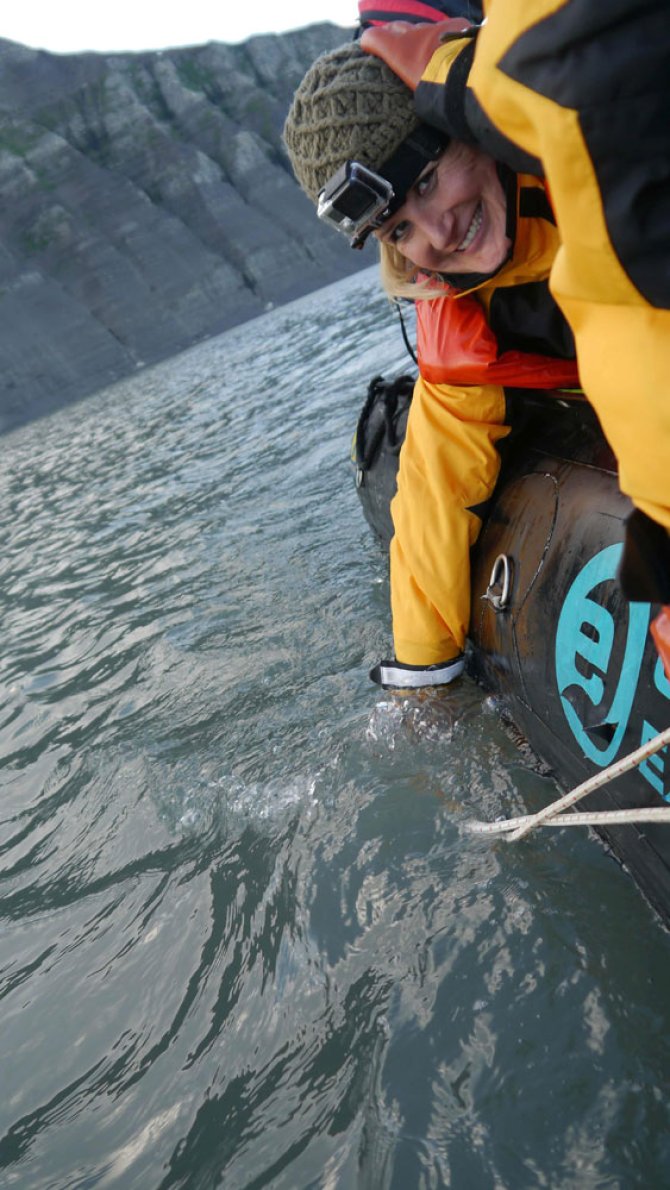
Blog Expedition Svalbard: Effects of pollution from ballast water on plankton
During the SEES expedition to Svalbard, researcher Andrea Sneekes gathered zooplankton to investigate the effect of chemicals in ballast water on these microscopic organisms.
Climate change has caused the retreat of sea ice in the Arctic opening up new sea routes. At the same time ship requirements increase. In the near future ships will be forced to sterilise their ballast water to prevent the introduction and distribution of non-indigenous species. Ballast water treatment is often conducted using chemicals. However risks of these chemicals for a cold environment like the Arctic are currently unknown. That is the reason that Andrea Sneekes of IMARES Wageningen UR brought a mini ballast water treatment system of RT SafeBallast, Arctic Chlor, on this expedition. This system produces chlorine as active chemical through electro chlorination.
During the expedition she collected Arctic zooplankton every day from a zodiac. The daily marine sampling on board of the zodiac was conducted together with other marine biologists that had a research focus on sea butterflies (a pelagic snail species), microbes & viruses, underwater sounds of marine mammals, shell fish and small crustaceans.

Back on board of the Ortelius the real work of Andrea started. She often made long days until mid-night in the laboratory on board of the ship. The improvised laboratory was set up by the scientists at the start of the expedition. For this purpose four lab tables were placed in an island formation and strapped to the wall. All kind of research equipment was placed on the tables such as aquariums, a binocular and a spectrophotometer. Away from the lab tables drying stoves were placed to dry research samples such as mushrooms, insects and mosses. In a great atmosphere all these different scientists of various research institutes and universities, worked together in the lab.
In the lab Andrea exposed the Arctic zooplankton that she caught during the day, to different chlorine concentrations that she produced with the mini ballast water treatment system. Plankton survival was checked daily after this. This resulted in dose-effect concentrations for Arctic species that will be compared to temperate species upon return in the Netherlands. This will provide Andrea a better insight into the risks of ballast water related chemicals in the Arctic environment.